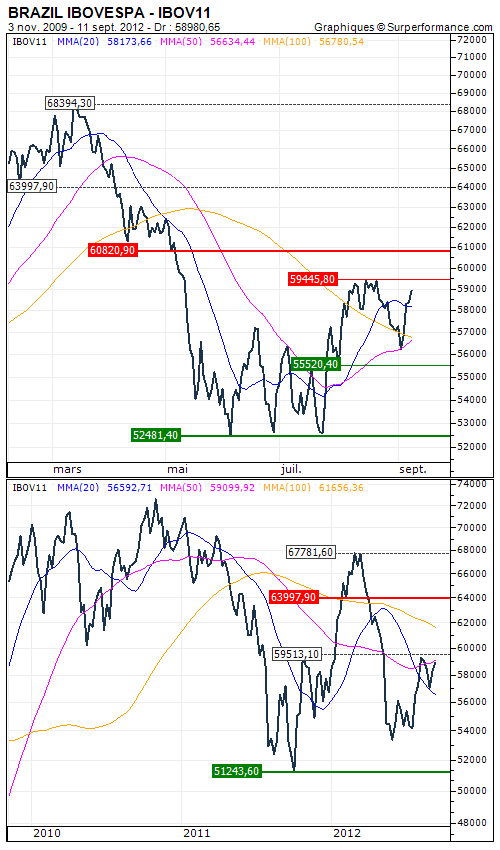BRAZIL IBOVESPA : Hope of recovery
By Rodolphe Steffan
The latest Brazilian economic statistics are encouraging. Industrial production rose for the second consecutive month in July. Economists estimate that the recent measures implemented by the government have been beneficial. In addition, the consumption of durable goods increased 0.8% in July. Vehicle sales for August totaled 400,000 units. Again, measure of low lending rates and the extension of tax cuts favored the industrial sector and the consumption of local products.
However, the Brazilian central bank has announced that it would end the cycle of lowering rates in October. The consumer prices index showed an increase of 5.37% in a year, beyond the barrier of 4.5% set by the authorities. This increase revived fears of high inflation and especially in food prices. In addition, the global economic outlook continue to worry Brazil. The recent publication of the ISM manufacturing PMI in the United States and European persistent difficulties could have repercussions on the country.
Technically, the trend remains neutral in weekly data. The index rebounded several times on the the 20-week moving average which remains bearish. In recent sessions, stocks have started to recover towards 59,500 points. A break above this level in weekly close would open the way to 64 000 points in the first place. On the downside, a daily close below the 55 500 points level would presage a return on the 52,400 points support.


 BRAZIL IBOVESPA
BRAZIL IBOVESPA 

